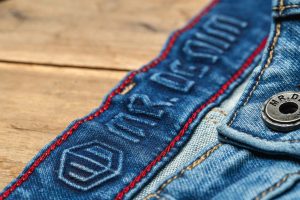Why the future of fashion will be circular and regenerative
Fashion has always been an ever-changing industry, constantly setting trends and shaping cultural norms. However, in recent years, there has been a growing movement towards sustainability and ethical practices in the fashion world. With the rise of fast fashion and its negative impact on the environment, more and more consumers and businesses are recognizing the need for a shift towards a circular and regenerative fashion industry. In this article, we will explore why the future of fashion will be circular and regenerative, and what this means for the industry as a whole.
The Problem with Fast Fashion
Fast fashion, which involves producing and selling cheap and trendy clothing at a rapid pace, has dominated the fashion industry in recent years. While this may seem beneficial for both consumers and businesses, the reality is that the fast fashion model is incredibly harmful to the environment and the people who make the clothes.
Firstly, the production of fast fashion is extremely resource-intensive, consuming large amounts of water, energy, and chemicals. This not only contributes to pollution and waste but also contributes to the depletion of natural resources. Secondly, the fast fashion industry is notorious for its exploitation of cheap labor, often in developing countries, where workers are paid extremely low wages and endure poor working conditions. Additionally, the fast fashion model encourages overconsumption and a throwaway mentality, as clothes are made to be worn for a short period of time before being discarded.
The Circular and Regenerative Fashion Model
In contrast to fast fashion, the circular and regenerative fashion model aims to create a closed-loop system, where resources are kept in use for as long as possible, and waste is eliminated. This model is based on three main principles: reduce, reuse, and recycle.
Reduce
The first step towards a circular and regenerative fashion industry is to reduce the overall production and consumption of clothing. This involves creating timeless and high-quality garments that are designed to last, rather than constantly churning out new collections. By reducing the amount of clothing produced, the environmental impact can be significantly reduced.
Reuse
The next step is to encourage the reuse of clothing. This can be done through various methods such as swapping, renting, or buying second-hand clothing. Not only does this extend the lifespan of garments, but it also reduces the demand for new clothing production.
Recycle
The final step is to recycle clothing at the end of its life cycle. This involves breaking down old garments into raw materials and using them to create new products. This not only reduces waste but also reduces the need for extracting new resources.
The Benefits of a Circular and Regenerative Fashion Industry
Implementing a circular and regenerative fashion model has numerous benefits for both the environment and society. By reducing the overall production and consumption of clothing, the environmental impact of the fashion industry can be significantly reduced. This includes reducing water and energy consumption, as well as decreasing the amount of waste and pollution produced.
The circular and regenerative fashion model also has positive social impacts. By promoting the reuse and recycling of clothing, the demand for cheap labor and unethical working conditions can be reduced. Additionally, by extending the lifespan of garments, there is a potential for job creation in the repair and maintenance of clothing.
The Future is Circular and Regenerative
The current fast fashion model is clearly unsustainable and harmful to both the environment and society. The circular and regenerative fashion model offers a sustainable solution that benefits all stakeholders involved. Many fashion brands and businesses are already making the shift towards this model, and consumers are becoming more conscious of their own consumption habits. With this growing movement, it is evident that the future of fashion will be circular and regenerative, and this is a step in the right direction towards a more sustainable and ethical industry.
In conclusion, the fast fashion model has controlled the fashion industry for too long, with damaging consequences. However, the rising trend towards circular and regenerative fashion offers hope for a more sustainable and ethical future. By implementing the principles of reduce, reuse, and recycle, we can create a fashion industry that not only satisfies our desire for new trends but also respects the planet and the people who make our clothes.










